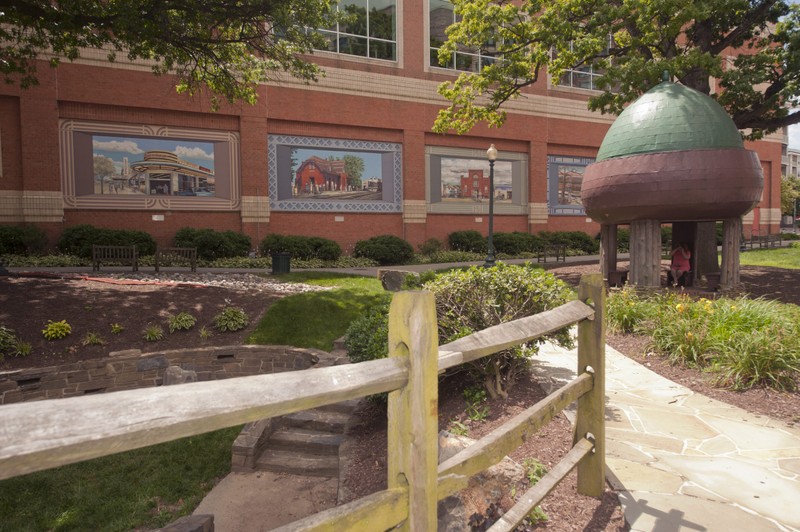Acorn Park
Introduction
Text-to-speech Audio
An acorn-shaped gazebo sits in this small park, all that remains of the large Silver Spring plantation for which unincorporated Silver Spring is named. Newspaper editor Francis Preston Blair, Sr. commissioned Benjamin C. King to build this gazebo in the 1850s. The gazebo marked the location of the original "silver spring," a waterway flecked with mica that Blair has come across in 1840. The acorn shape is a symbol of the oak tree where Blair proposed to his wife Eliza. The park is all that remains of the estate, and the gazebo was moved a short distance from its original location in 1946.
Images
Acorn Park pavilion, Montgomery County Department of Parks (reproduced under Fair Use)

Backstory and Context
Text-to-speech Audio
In 1840, Francis Preston Blair, Sr. (1791-1876) found a spring containing mica particles while riding his horse, Selim. With his wife Eliza he Eliza purchased the spot and hundreds of acres for a country estate, which he named Silver Spring after this waterway. Blair, editor of The Globe newspaper, was also a political adviser, serving 12 presidents. He was a friend of seventh president Andrew Jackson. In the 1850s, Blair commissioned Benjamin C. King to build an acorn-shaped gazebo overlooking the original spring. The acorn symbolized the oak tree where Blair had proposed to Eliza. He also marked the spot with a grotto, a nymph statue, and a stone slab from the quarry of Alfred Ray.
Silver Spring, Maryland, is an unincorporated Montgomery County community named for Blair's estate.
In 1942, the Maryland-National Capital Park and Planning Commission acquired the .12-acre triangle of land for the park, seeking to protect the spring from the expansion of Newell Street. Four years later, it moved the gazebo a short distance from its original location north of Kennett Street so that it would be nearer to the spring. The park features a redesigned grotto area with the gazebo and spring, dedicated in 1955. That same year, the original Silver Spring house was demolished.
The park is also the home of a mural depicting Silver Spring history. Installed to mitigate the impacts of new development in the 1990s, the Silver Spring Memory Wall depicts five buildings and points in time. Washington artist Mame Cohalon (1939-2020) designed and painted the murals on the exterior of a new Caldor department store building next to the park. The Montgomery County Planning Commission has jurisdiction over the murals through an easement created when the Caldor building was approved. The murals have been criticized for whitewashing Silver Spring history by showing African Americans in public spaces that once were rigidly segregated.
Sources
Downtown Silver Spring. Acorn Park, Silver Spring Arts & Entertainment District. Accessed May 9th 2020. https://www.silverspringdowntown.com/go/acorn-park.
Montgomery County Department of Parks. Acorn Urban Park, Montgomery Parks. October 21st 2019. Accessed May 9th 2020. https://www.montgomeryparks.org/parks-and-trails/acorn-urban-park/.
Rotenstein, David S. “Protesting Invisibility in Silver Spring, Maryland.” The Activist History Review (blog), June 23, 2017. Accessed September 20, 2017. https://activisthistory.com/2017/06/23/protesting-invisibility-in-silver-spring-maryland/.
Rotenstein, David S. “Producing and Protesting Invisibility in Silver Spring, Maryland.” In Demand the Impossible: Essays in History as Activism, edited by Nathan Wuertenberg and William Horne, 89–111. Washington, D.C.: Westphalia Press, 2018.
https://www.montgomeryparks.org/parks-and-trails/acorn-urban-park/
